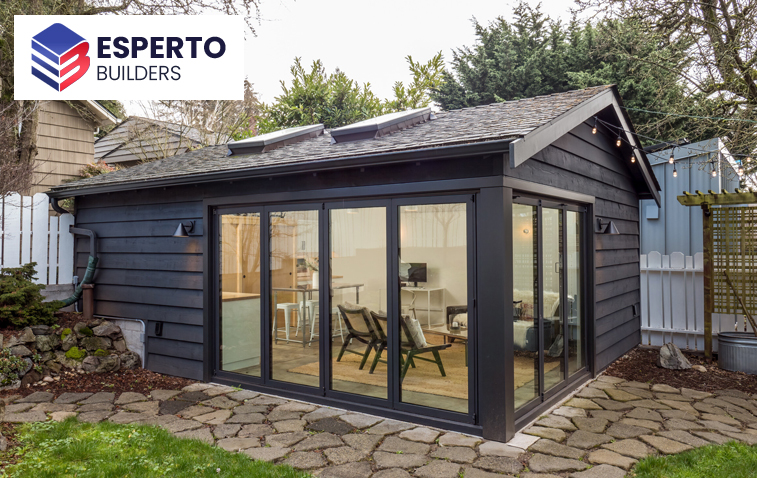Explore our comprehensive guide on San Jose ADU setback rules. Learn about ADU setback requirements, regulations for different zones, and practical tips to meet these requirements.
Understanding the local setback requirements is crucial when constructing an accessory dwelling unit (ADU) in San Jose. These standards are not simple construction guidelines but strict legal requirements designed to maintain uniformity, preserve open space, and ensure safety.
This article aims to demystify San Jose’s ADU setback requirements, allowing homeowners to confidently plan their ADU projects while ensuring compliance with local building codes. From zoning considerations to practical tips, we’re here to guide you through each step of the process.

Setbacks refer to the required distance between structures and property lines. These regulations ensure that buildings are constructed at safe distances from their neighbors and comply with zoning laws.
In San Jose, ADU setback requirements state that the minimum distance between an ADU and the main house is:
These measurements apply to side and rear yards, while the front yard setback is determined by the zone where your property is located.
The San Jose municipal code stipulates these ADU setback requirements to maintain a sense of space and privacy between neighboring properties. Moreover, these guidelines help preserve neighborhoods’ aesthetic and spatial character by ensuring that new constructions or extensions do not overshadow or crowd existing structures.
The specifics of these requirements can change depending on zoning laws, so homeowners must review the municipal code or consult with experts before planning an ADU.
Our team at Esperto Builders specializes in San Jose’s zoning laws and setback requirements. We recognize the complexity and confusion that these regulations may pose, particularly for first-time ADU homeowners. Rest assured, we are here to support you throughout the entire process, ensuring your project aligns with all relevant laws. With our guidance, you can enjoy your new living space without legal complications.
Each residential zone in San Jose has different setback requirements. It’s essential to research and understand the zoning of your property before building an ADU. Here are some examples of setback regulations for different zones:
However, the side yard setback for corner lots increases to 10 feet. Adhering to these regulations is crucial to ensure compliance with zoning laws and create a harmonious neighborhood aesthetic. It’s important to consult local building codes and ordinances for complete and accurate information regarding setbacks in your area.
Setbacks of 5 and 15 feet for the side and rear yards ensure proper spacing between neighboring properties. These setbacks help maintain a balanced and harmonious environment within the R-M zone, promoting privacy and a pleasant living experience for all residents.
Remember, these are just general guidelines. There can be exceptions and additional requirements based on various other factors. Hence, it’s always wise to consult with professionals or city planners familiar with ADU regulations to ensure compliance.
In addition to the zoning laws, ADU setback regulations depend on your property’s designation. For instance, if your property is in an R-1 zone, and you plan to build a detached unit at the back of your lot, the rear yard setback should be 15 feet.
However, this distance can vary depending on whether your property is designated as an R-1, R-1E, or R-2 zone. Understanding these nuances and consulting with experts must ensure your ADU meets all requirements.
Apart from the setback regulations, there are other development standards that homeowners must adhere to when building an ADU in San Jose. These include:
With these regulations in place, the city aims to promote sustainable development while maintaining a balanced and harmonious environment for all residents.
It is important to remember that city regulations are in place to ensure that all accessory dwelling units (ADUs) are constructed in a manner that aligns with the neighborhood’s character and prioritizes its residents’ best interests. Compliance with these regulations is not the sole objective but also about fostering a strong sense of community.
Before starting your ADU project, it is crucial to have a comprehensive understanding of the San Jose ADU setback rules and other development standards. This will help you avoid potential legal complications and ensure that your project contributes positively to the overall ambiance of your neighborhood.
In addition to the setback regulations, ADUs must comply with specific size and height restrictions. For this reason, it’s essential to consult with professionals or city planners familiar with these development standards before designing your ADU.
Moreover, homeowners should consider how their ADU will affect the surrounding properties’ natural light, privacy, and overall aesthetic. By adhering to size and height restrictions, homeowners can ensure that their ADU does not negatively impact the neighborhood and becomes a valuable community addition.
If you still have questions about ADU setback requirements in San Jose or need assistance with your project, don’t hesitate to contact us at (408) 901-8513. Our experienced team is ready to guide you through the intricate maze of zoning laws and building codes. Understanding and adhering to these rules is key to a hassle-free and successful ADU project.

Understanding San Jose ADU setback rules is critical to the success of your project. These guidelines are designed to ensure that your ADU enhances your property and respects the character and integrity of the neighborhood.
Navigating through the complex landscape of Accessory Dwelling Unit (ADU) setback requirements in San Jose can be daunting. However, these regulations are critical in preserving the harmony of residential zones, ensuring safety, and maintaining an organized neighborhood aesthetic.
You can ensure your ADU construction project complies by clearly understanding your zone, taking accurate measurements, seeking professional advice, and being aware of the legal implications.